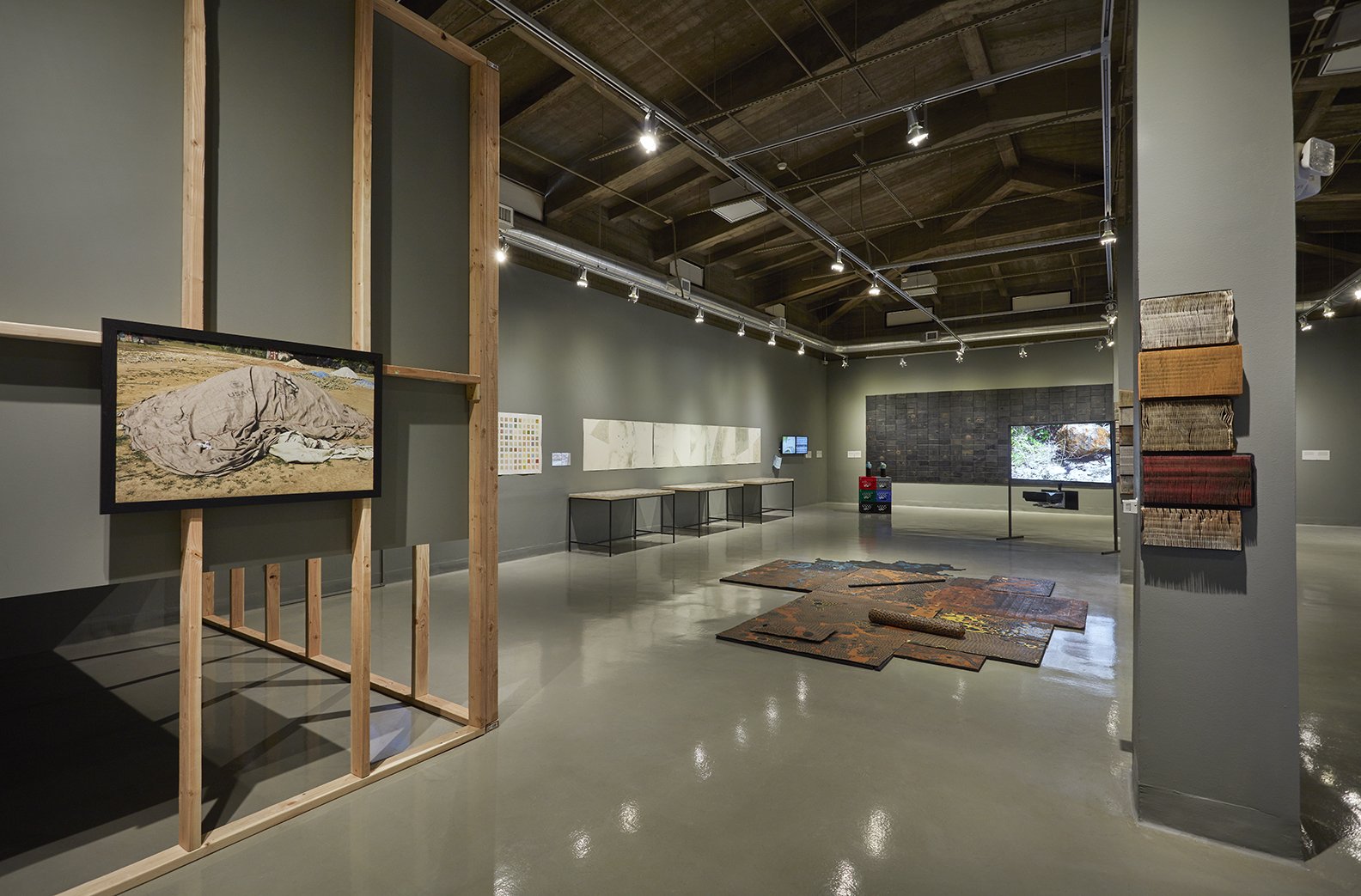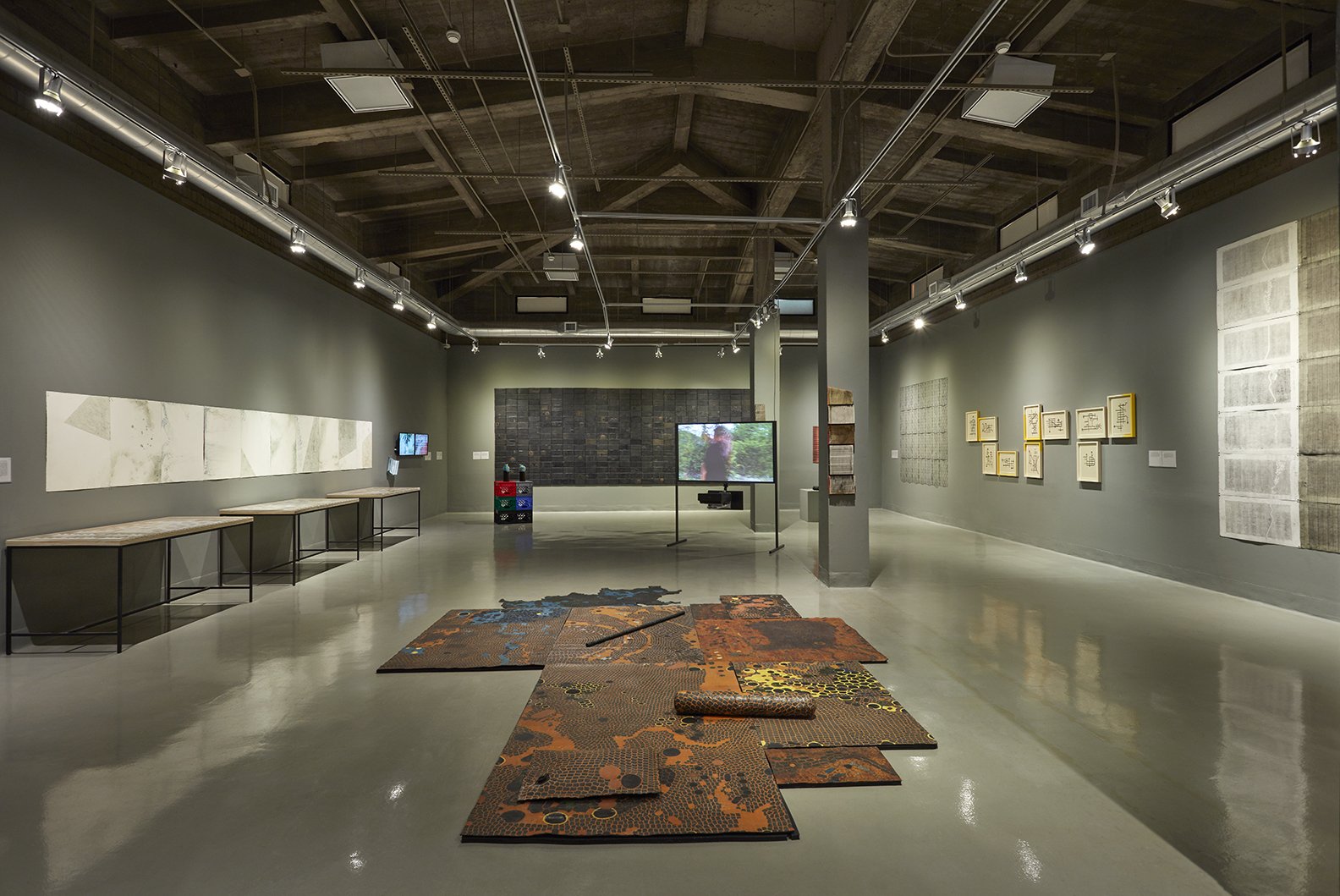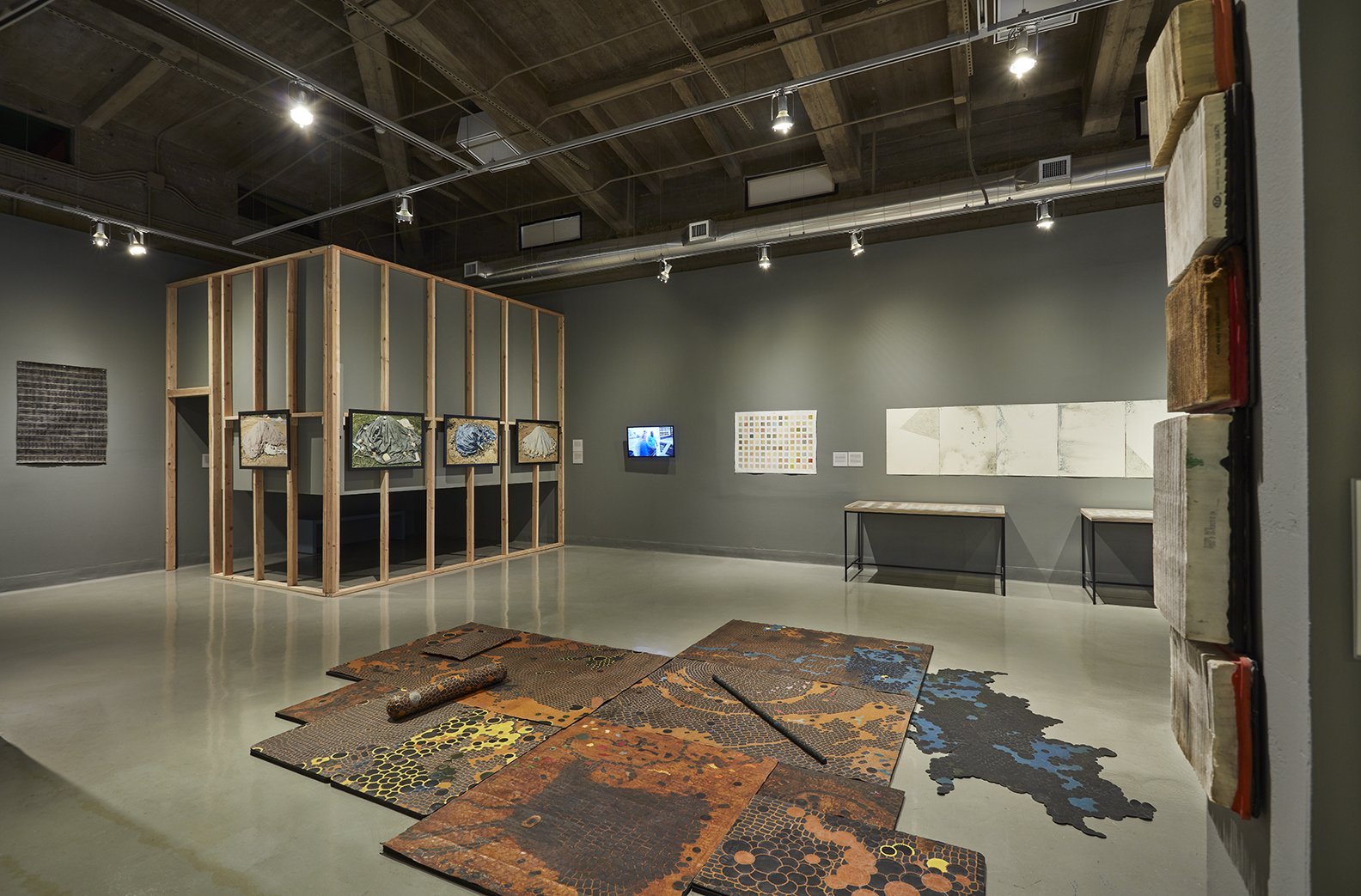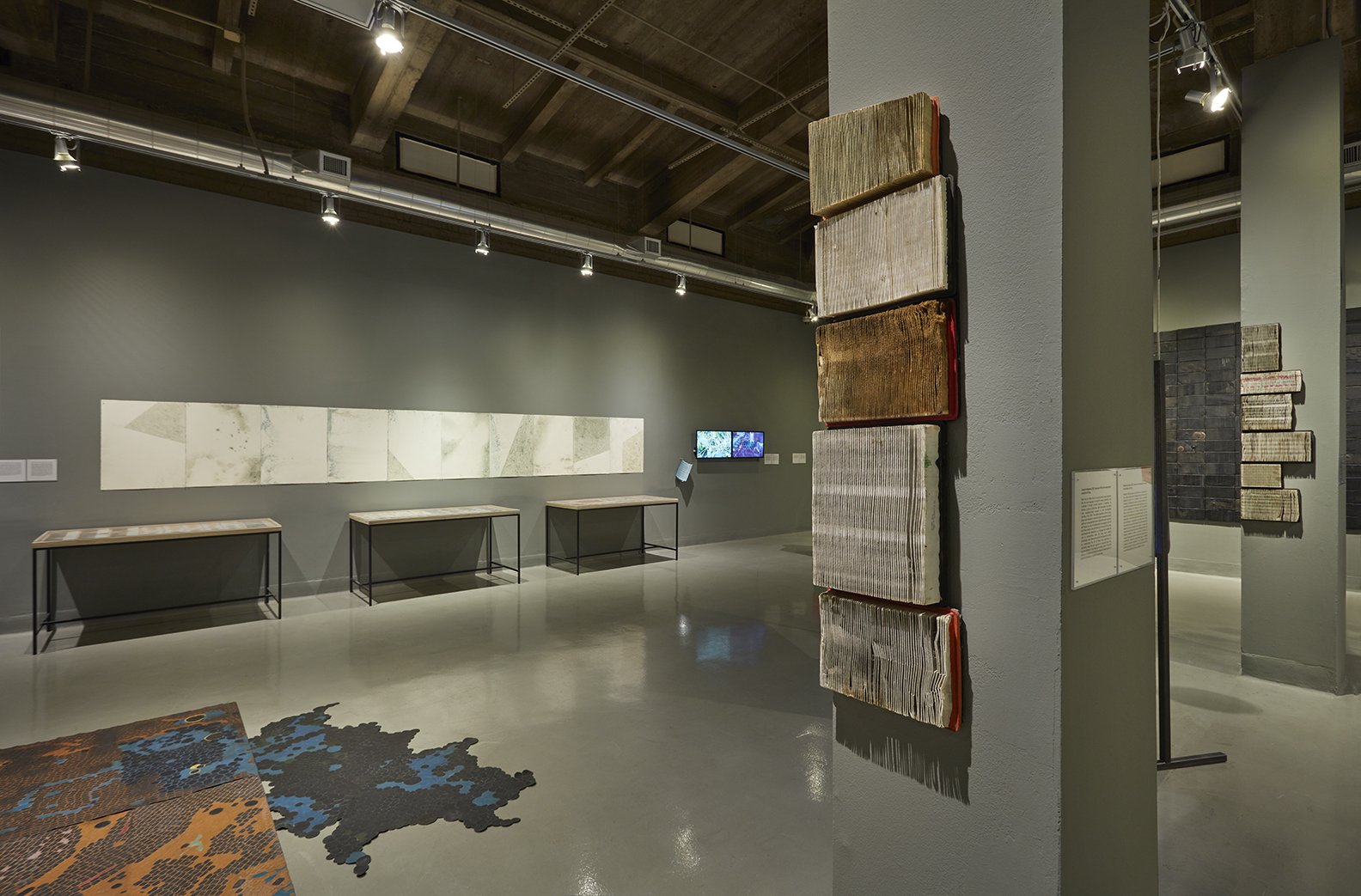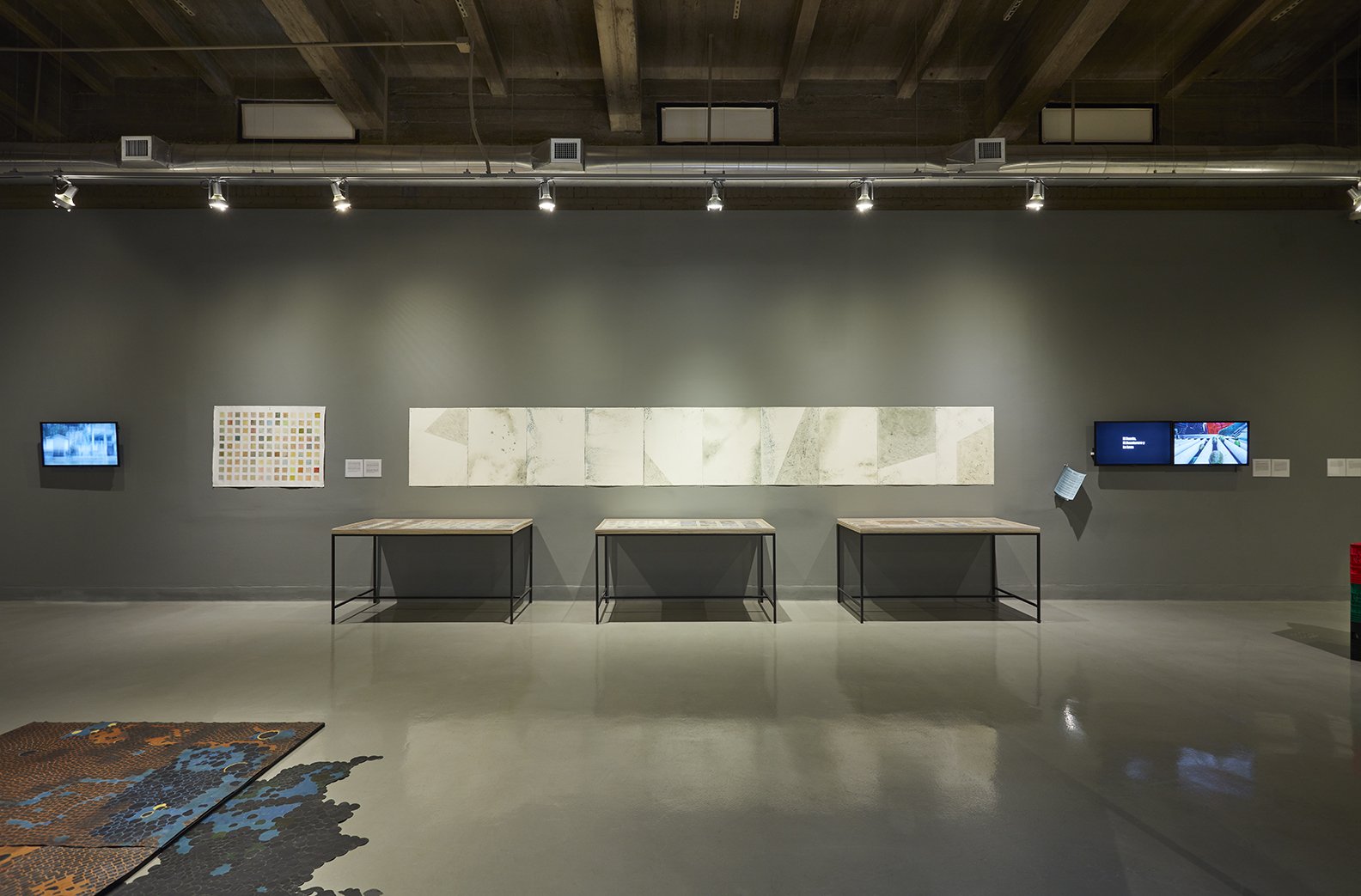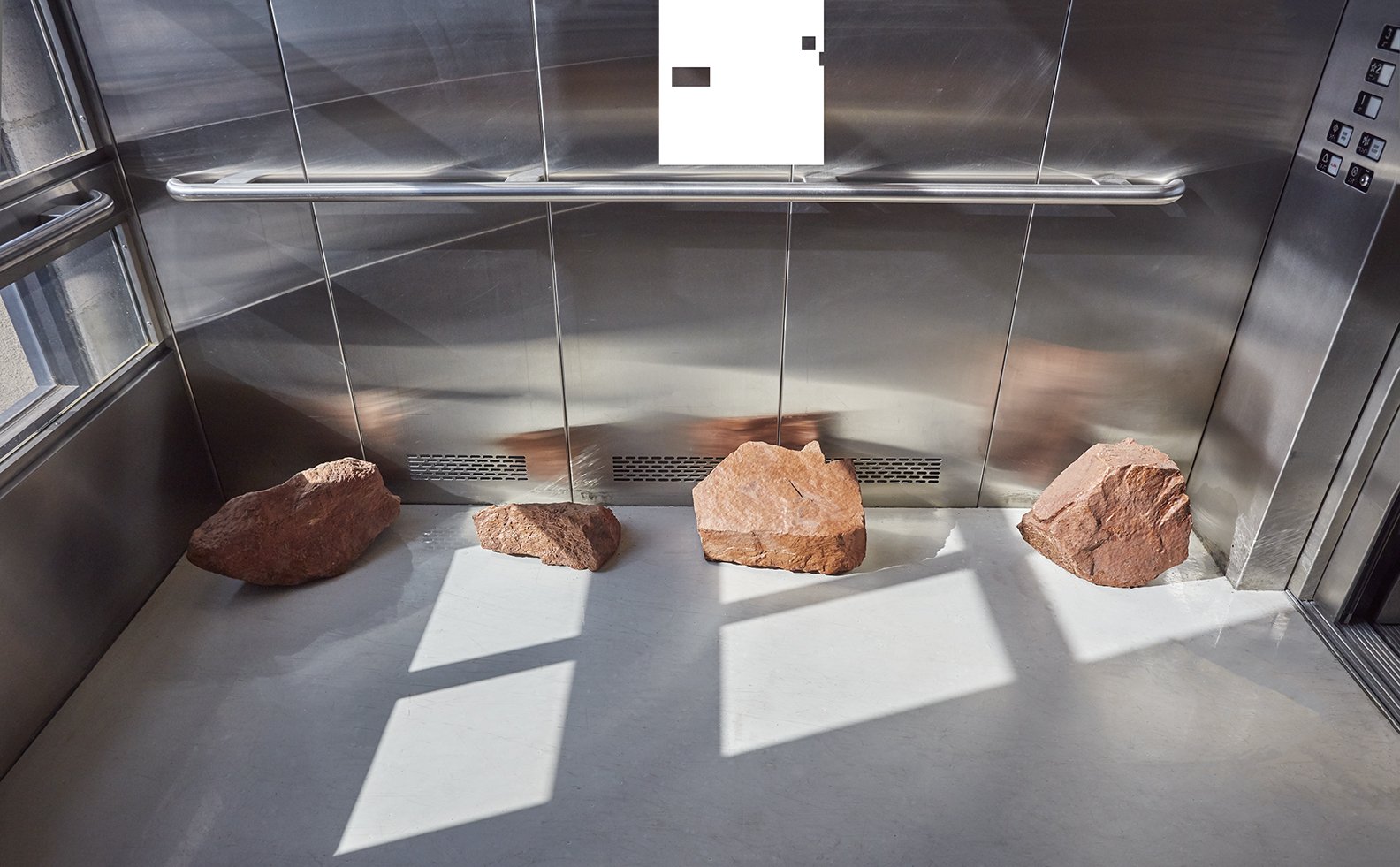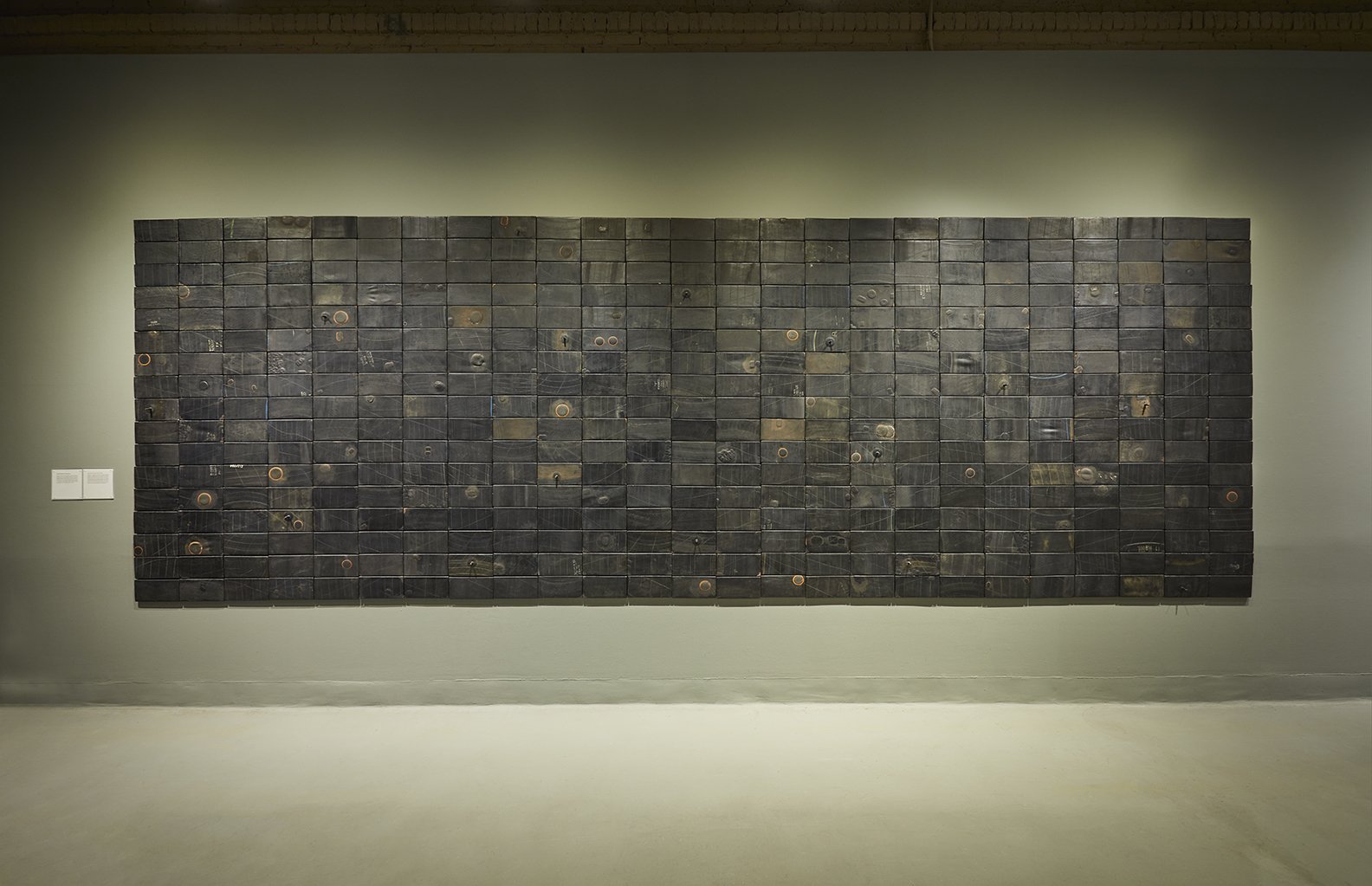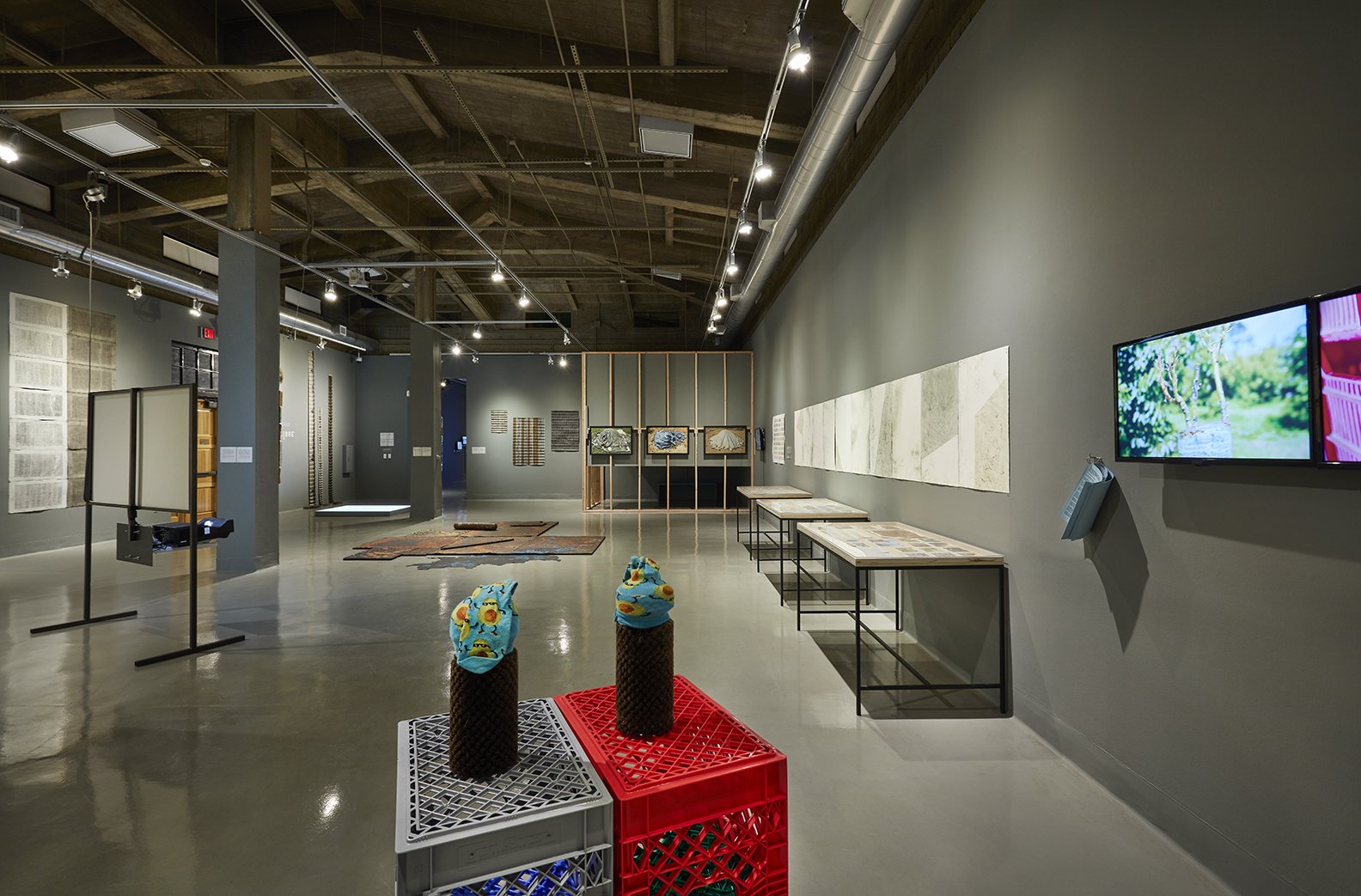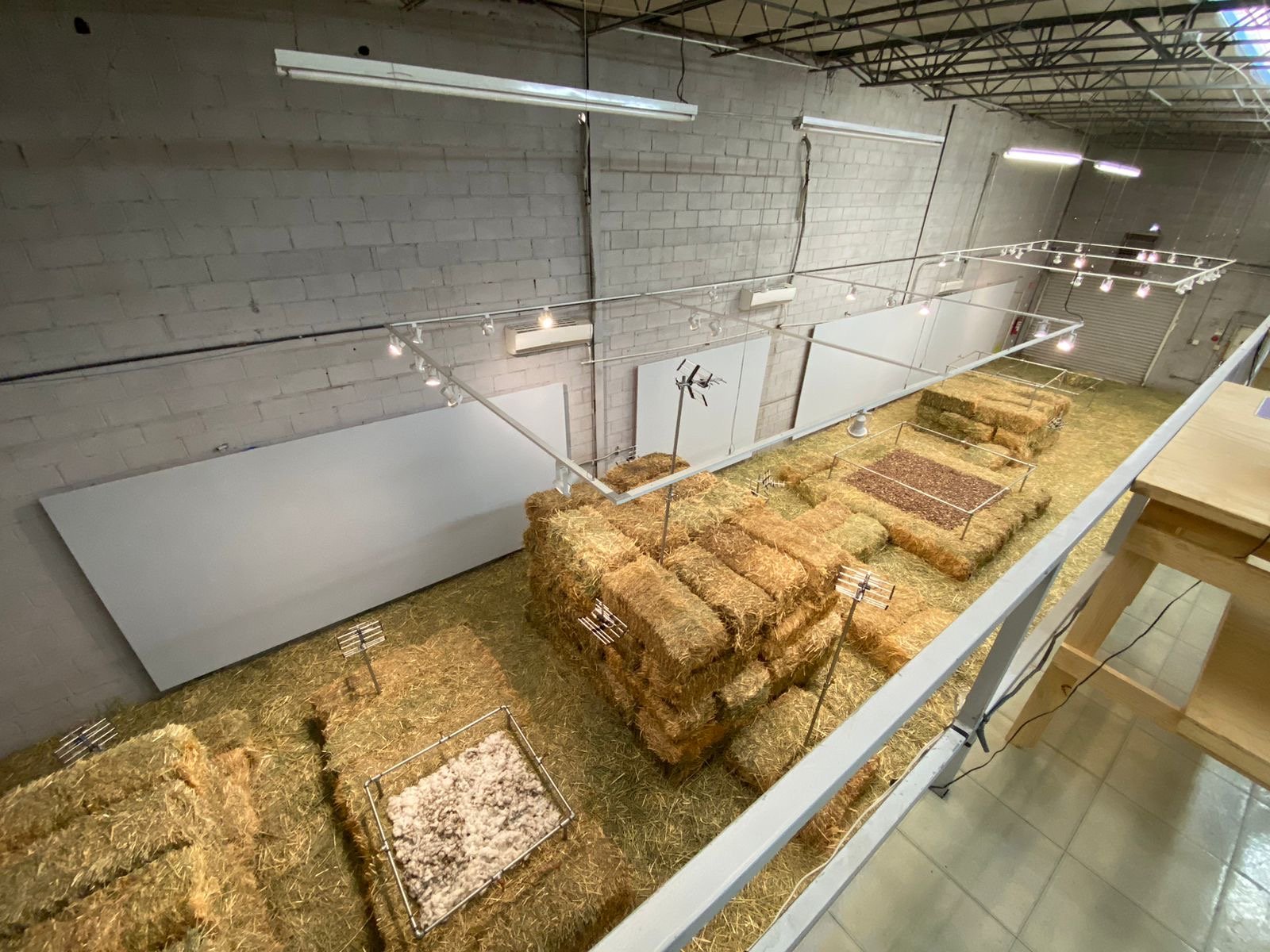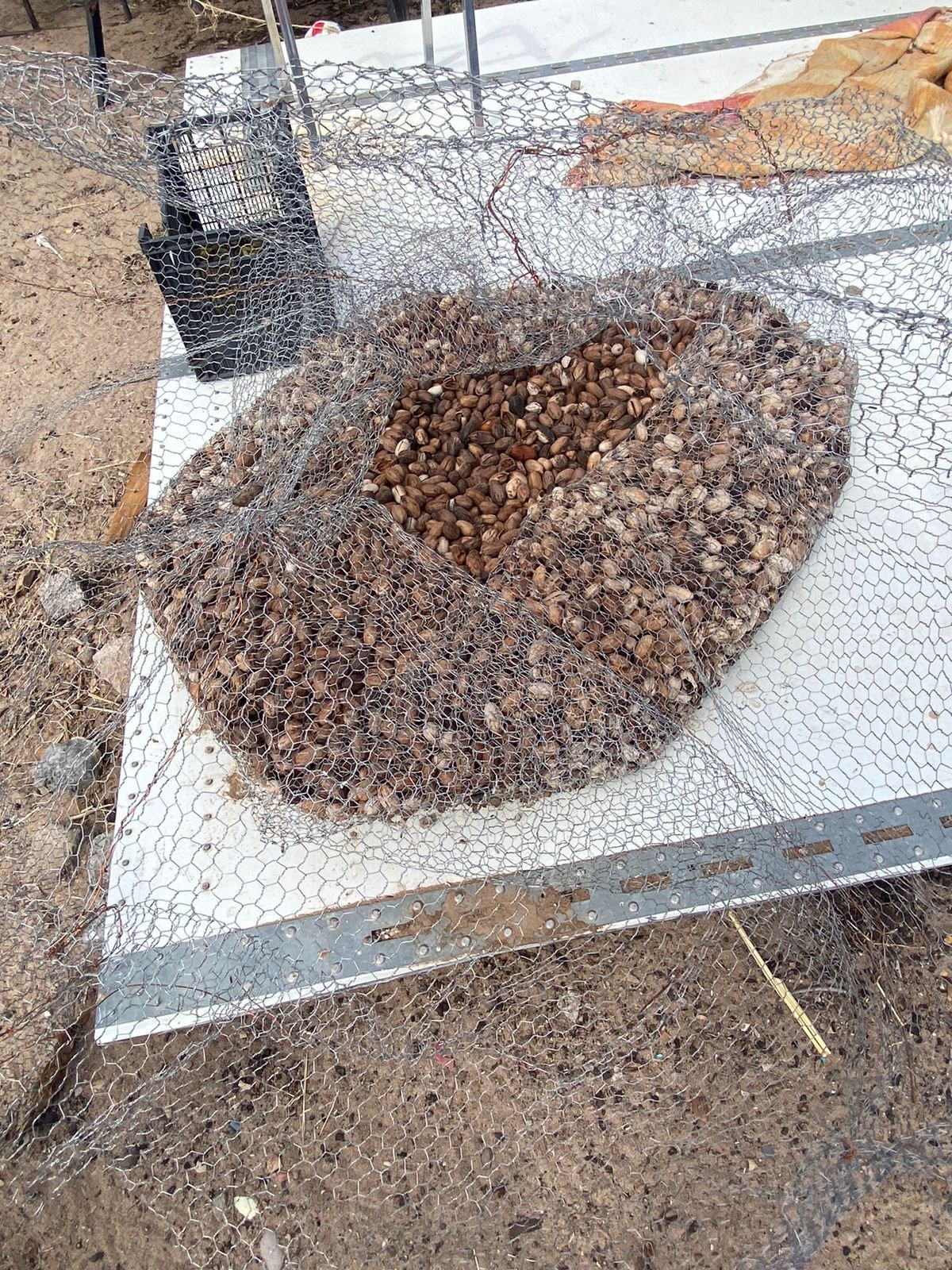Adán Vallecillo: Tiempo Libre
On view at the Stanlee & Gerald Rubin Center for the Visual Arts
January 25 - April 20, 2024
Full Press Release Available Here.
In the first U.S. museum solo exhibition of work by Honduran multidisciplinary artist Adán Vallecillo, the Rubin Center presents a mid-career survey of the artist’s work from 2010 to the present. Vallecillo makes site-responsive and research-driven projects, many of which think about political economies and the natural world. Trained in visual art and sociology, Vallecillo considers the connections between abstraction and daily experience in his work, untangling the visual and historical relationships between Central America and the West. Within the legacies of extraction and exploitation embedded in Modernism, Vallecillo’s work finds a poetics of the quotidian. “Very simply, I try to facilitate these mediating encounters between material resources and symbols, in order to provoke changes in how we make sense of both the beauty and imperfections of the world,” he writes.
Vallecillo’s work is collected by major international public and private collections, including: CIFO Foundation, Miami, FL; Bronx Museum of the Arts, Bronx, NY; Phoenix Art Museum, Phoenix, AZ; Colección Patricia Phelps de Cisneros, New York, NY; Sayago & Pardón, Los Angeles, CA; Museo de Arte y Diseño Contemporáneo, San José, Costa Rica; Museum of Latin American Art (MOLAA), Long Beach, CA; and Daros-Latinamerica, Zürich, Switzerland, among others. He has participated in biennials in Montevideo, Guatemala City, Curitiba, Venice, Havana, and Cuenca.
All photographs on this page by Marty Snortum.
Vertical Hidráulica at Azul Arena
Ciudad Juárez
In conjunction with Tiempo Libre, Adán Vallecillo also opened a site-specific installation in Ciudad Juárez, in collaboration with Azul Arena and curated by Laura Augusta. In this installation, titled Vertical Hidráulica, Vallecillo collaborated in a conversation among activists, organizers, and artists involved in water rights on the border. The resulting project included installations of agricultural monocrops—alfalfa, cotton, pecans—in large geometric bales and piles, with a video projection of the recorded conversation.


